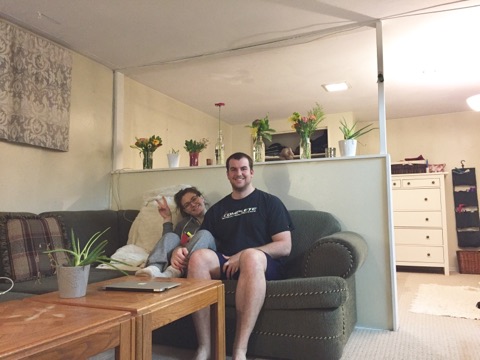By Hayley Kirsh
According to an analysis of the most recent census data released by Statistics Canada, the median monthly rent price in the residential area just East of Carleton University has gone up 56 per cent between 2011 and 2016. The current average rent in the area for a two-bedroom apartment is $1,294 according to the Canada Mortgage and Housing Corporation’s (CMHC) annual survey.
In comparison, surrounding areas showed percentage increases much lower like 18 per cent and 28 per cent.
This map outlines the census tracts of the City of Ottawa, darker areas show the highest percentage increases in median rent from 2011-2016. To the right of the Carleton University Marker you will see the Old Ottawa South area in dark blue.
Source: Statistics Canada
The area, known as Old Ottawa South is home to a mix of families, students and retirees. It is especially sought after by university students because of its close proximity to Carleton University and shopping amenities like Billings Bridge and Lansdowne Park.
In her basement, bachelor apartment that she shares with her partner, Carly Parks, a 4th year Public Affairs and Policy Management student at Carleton University explains, “Rent is astronomical in this area, and would be unaffordable if I didn’t split costs with my partner.” Parks describes the $850 unit as “one room with a kitchen off the side and some storage.”

According to the CMHC annual survey, in 2016, bachelor apartments in the Old Ottawa South area cost on average $842 per month compared to 2015 where the average was $775 per month. Bachelor apartments in other Ottawa neighbourhoods like Chinatown cost on average $790 per month.
Meaghan Beale, another Carleton student moved out of the Old Ottawa South area into the area just North by Chinatown because of the cost of rent and substandard living arrangements. “The landlord kicked everyone out of the building to renovate one year (except my unit, because the other tenant at the time refused to leave).” She continued, “My unit was a mess; I think the landlords wanted to keep it that way so the people living there would leave voluntarily.”
Ian Grabina is the ward office liaison for Old Ottawa South, he manages and coordinates resident issues in the area with the Capital Ward councillor David Chernushenko. Grabina says high rent and substandard living arrangements is an issue plaguing many neighbourhoods adjacent to schools like Old Ottawa South. “Single family homes are being converted to triplex’,” he says. “The challenge then becomes, that students are willing to live in these inappropriate builds, with some having upwards of seven to 10 bedrooms per residence.”
“It’s a challenging situation.” He continued, “We’re trying to control the number of bedrooms one would see going into a triplex.” Over the summer, an Interim Control Bylaw was put in place by the City of Ottawa to temporarily halt the development of multi-unit dwellings in areas like Old Ottawa South and Sandy Hill (residential area beside University of Ottawa). In the meantime, according to a September 13 city council meeting, the City is trying to come up with some restrictions for multi-unit dwellings in residential neighbourhoods.
Dominique Milne, a real estate broker in Old Ottawa South says, “The resale market in the area has gone up, so landlords have to cover their costs in terms of mortgage payments.” The Ontario Residential Tenancies Act states that landlords are only allowed to increase rent by market rent for newly signed leases. Market rent is the estimated amount a property with a certain number of bedrooms, in a certain area, will rent for according to the Ministry of Housing. The 2017 market rent value allowed for an average percentage increase of 1.5 per cent.
Rent is on the rise across the city says Grabina, and as long as there are students hoping to stay close to school, landlords are able to charge more for less.
